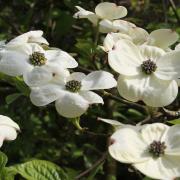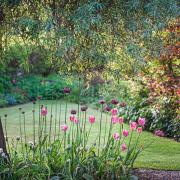Sir Roddy Llewellyn's expose of the man to blame for the monstrous tree that has caused so many neighbourly rifts.
I am clearing ground previously inhabited by mature Leyland cypresses, originally planted as a hedge since abandoned. The soil is starved and dries out very quickly, typical of ground that has entertained this monstrous tree which has caused so many unpleasant neighbourly rifts. The Leyland cypress first came into being in the 1880s as a result of a chance cross-pollination between a Monterey Cypress (Cupressus macrocarpa) from California and a Nootka Cypress (Chamaecyparis nootkatensis) from northern North America, in the arboretum at Leighton Hall near Welshpool in north Wales. These two trees would never have been able to cross in the wild as their natural habitats are thousands of miles apart. John Naylor, a 19th century banker, made this possible, although unwittingly, through his tree collection of different genera from all over the world. The tree was named after a close relation of his - Christopher Leyland.So, here I am left with a border of starved soil and a sunny aspect and it is time to decide what to plant in it. Deep-rooted perennials are an obvious choice. Four culinary plants spring to mind, namely lovage (Levisticum officinale), a handsome plant that can grow up to six feet in height and whose handsome foliage is a welcome addition to any stew, salad or soup. Then, of course, there is fennel whose beautiful, finely-cut, anise-scented foliage decorates any border, especially the purple varieties. I cannot resist biennial angelica, truly a magnificently architectural plant, for its rounded greenish yellow flowers and pretty leaf. The fourth might be horseradish. I choose the word 'might' with care as its deep explorative roots mean that it is the very devil to get rid of if you happen to change your mind at a later date: that is why you often see it planted in an out-of-the-way place. For pure ornamentation, I very much want to include an Acanthus with its glorious leaves and flowers. Lupins, sedums and Alchemilla mollis are three obvious choices for dry and poor soils in sunny aspects I am going to cheat and buy them as young containerised plants, all of which will be happy to be planted in mid-summer so long as the planting hole is thoroughly watered first.I have even successfuly set roses in flower. The knack is to make sure their roots are disturbed as little as possible. Roses need to be sited carefully as it is easy to forget that they consist of bare prickly sticks for seven months of the year. I remember the late David Hicks would only grow them where they could not be seen from any window, for that very reason. It is a relief that the post-war fashion for establishing island beds of roses surrounded by lawn is over for the most part. However, roses prove themselves indispensible for those who garden on heavy clay soils as they love such conditions. I can only talk about roses I have grown myself. I have found the two best climbers for inhospitable, windy sites are 'Cecile Brunner' (small double pink, scented flowers) and 'Dortmund' (strong red, single, not scented but remontant). We all have our favourites, of course, but if you have the space please try 'Just Joey' with large copper/orange flowers with pink fringes to each petal. It is a joy to behold and to smell.The advent of June means that you can give your houseplants a well deserved holiday outside in cool shade right up until the first frosts. Re-pot them using fresh compost and give them a good feed and water. Alternatively indoor plants can have their pots buried in the ground in semi-shade. It is now safe to plant out sweet corn and outdoor tomato varieties. Once irises have flowered the flower stalks should be cut off and the foliage is best tidied up by attacking them with shears about one foot above the ground. Every four or five years iris clumps should be lifted and divided gently with a fork. Discard central pieces of bare rhizome and replant healthy outer pieces into fresh soil, cutting them to about four inches in length, so that part of the rhizome is exposed to the sun.The pruning of the various different kinds of clematis is often described in an unnecessarily complicated and scarcely comprehensible fashion. There is an easy formula to follow. The general rule is to prune back those species that flower early in the season (e.g. C. alpina) by the end of June, and those that flower later (C. viticella and C. texensis) can be cut back hard to the ground at any time during the winter. The best time for cutting back flowering shrubs is soon after their flowers have faded, for the simple reason that they will produce next year's flowers on the previous year's fresh growth.


























